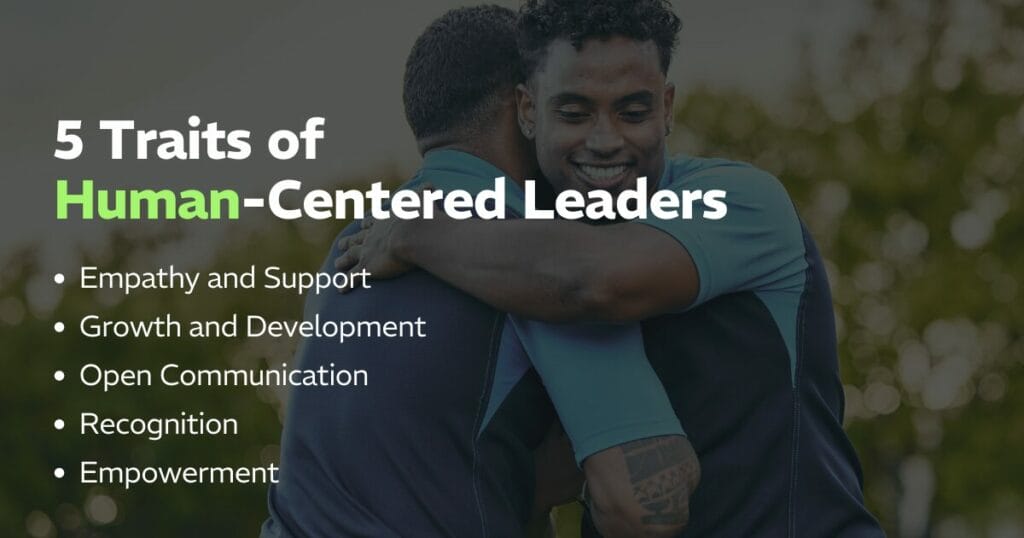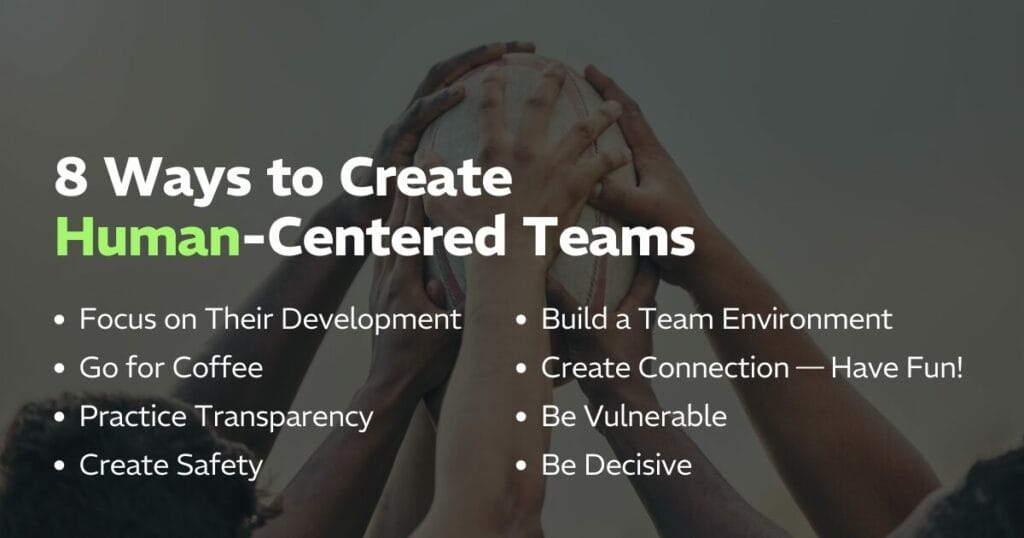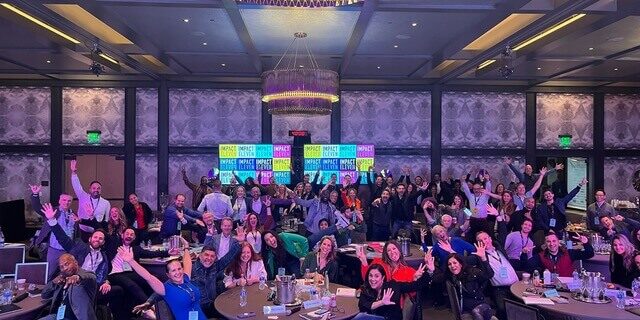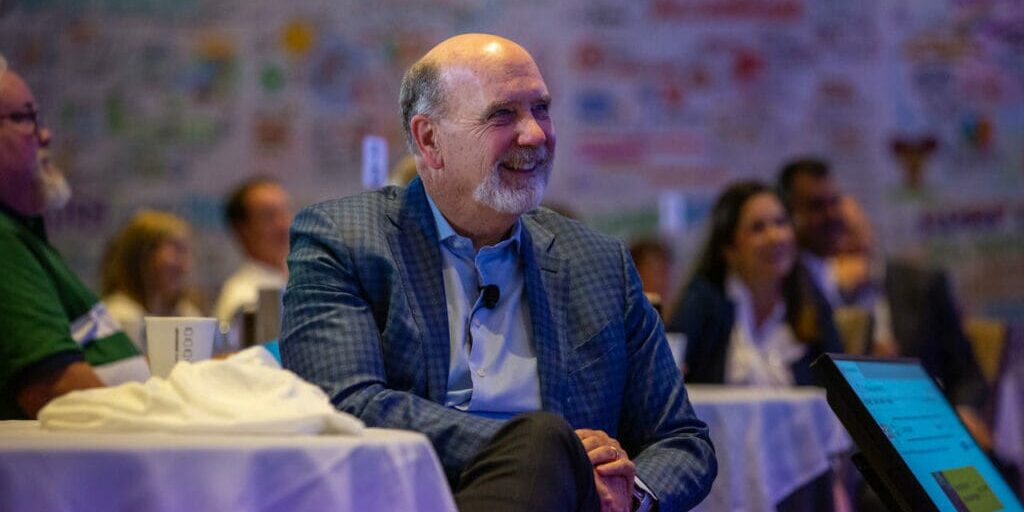The world of work is forever changed. Employees have changed, too. They have evolved their expectations of what work should be like and how managers should act. This new reality demands a new approach called human-centered leadership.
This new reality presents a paradox for business leaders. We need to pursue growth and get more out of our people, but we also need to care for them and offer new levels of support and development. More leaders are struggling to find the delicate balance of what I call “support and stretch.” You need both elements to create momentum, capture opportunities and deliver big results.
Unfortunately, employees are wary of leadership’s ability to support their growth. Only 23% of employees surveyed by Gallup trust their leaders — and that’s increased from a couple years prior. That means your efforts to build human connection can fail. For example, only 48% of workers surveyed by EY believe their leaders’ attempts at empathy are genuine.
It’s clear that leaders need more than just empathetic words; they need to demonstrate their commitment through actions and support. This work won’t be easy. However, the reward for companies that successfully embrace human-centered leadership is high-performing teams that can win in the marketplace today and sustain competitive advantage into the future.
Let’s explore what human-centered leadership is, how leaders can develop this ability, and how to put it into action with your team and integrate it into your culture.
What Is Human-Centered Leadership?
Human-centered leadership is the practice of prioritizing people’s values, ideas and experiences as most important to the long-term success of the enterprise. It’s a transformative approach, a leadership style deeply rooted in the belief that when leaders focus on making a positive impact on their team members’ lives, the organization benefits significantly.
Right now, we’re seeing rapid advances in technology that are disrupting how we work and communicate. But technology isn’t the enemy of human-centered leadership. In fact, it can augment our ability to form lasting connections, develop meaningful relationships and track progress toward results. Artificial intelligence, for example, is a powerful co-creation engine, but it can’t do your thinking for you. It certainly can’t listen closely to your customers or form the emotional connections that build relationships and create long-term clients.
As humans, we fundamentally have a deeply held desire to be seen, to be understood, to be known and to be valued. And in a world filled with technology, the most complex part of moving an idea or an organization forward is still the people. That’s where human-centered leaders will only become more important — embracing those uniquely human moments even as everything else becomes automated and digitized.
Here are just a handful of the traits of human-centered leaders, based on our Leadership Competency Model.
Empathy and Support
Human-centered leaders exhibit a strong capacity for empathy, which O.C. Tanner research finds contributes to better employee fulfillment, belonging and connection. These leaders strive to understand each employee’s personal and professional challenges and help them navigate them effectively in alignment with business needs and goals.
Growth and Development
These leaders encourage their teams to acquire new skills, advance their knowledge and take on new challenges. Only 20% of employees say their leader always takes an active role in helping them develop their full potential, according to Leadership IQ. Human-centered leaders separate themselves from the other 80% by prioritizing their people.
Open Communication
Transparency and open lines of communication are hallmarks of human-centered leadership. These leaders create psychological safety at work by encouraging open communication and debate. Team members aren’t penalized for speaking up and offering differing opinions — even as leaders eventually move the conversation to a decision everyone can commit to.
Recognition
Celebrate progress, not just outcomes. People want to feel like they have momentum, like they are contributing to something that’s headed in the right direction. The best leaders look for opportunities for recognition on all levels to reinforce what’s going right on a team.
Empowerment
Human-centered leaders empower their teams by delegating meaningful tasks and providing decision-making autonomy. This requires giving up work you don’t really need to be doing so your employees can learn and grow. It’s also about performance enablement — having future-oriented conversations with your people and encouraging them to stretch and take intelligent risks.

3 Applications of Human-Centered Leadership
Human-centered leadership is all about developing your people while creating lasting business success. Putting this idea into action in your work environment requires commitments at three levels: yourself, your team and your company or industry.
Self-Leadership
- Identity: Leaders should cultivate self-awareness and interrogate their beliefs to develop humility and confidence. Understanding one’s impact on others is crucial.
- Vision: Articulate a clear and compelling vision that serves to inspire and guide the team towards shared goals.
- Routines and rituals: Commit to personal and professional growth by embedding learning and agility into daily practices. For example, consider journaling prompts to help you build these habits.
Team Leadership
- Co-creation: Foster a collaborative environment where value is created through collective effort. Encourage team members to voice their ideas and participate actively in projects.
- Contribution: Invest in helping team members maximize their potential by providing opportunities for meaningful work and professional development.
- Community: Build a sense of community within the team by promoting connectivity and aligning organizational objectives with the needs and desires of the team members.
Market Leadership
- Purpose: Galvanize the team around a shared purpose that inspires commitment and captures opportunities.
- Congruence: Maintain authenticity to inspire trust and safety, which are catalysts for alignment and effective change management.
- Ownership: Encourage team members to take radical responsibility for their results and maintain an agile, future-ready stance.

8 Ways to Create Human-Centered Teams
Implementing human-centered leadership in teams requires deliberate changes in how leaders interact with their teams and manage work processes. Here are practical steps leaders can take:
Focus on Their Development
Human-centered leaders look beyond themselves. They understand that leadership isn’t a job, but a responsibility. And part of that responsibility is developing your people. Be a coach who helps your people take ownership of their work and pursue new projects, responsibilities and roles. Invest in helping them achieve their full potential while eliminating barriers that might inhibit success.
Ask yourself questions like:
- Do you know what’s most important to your people?
- How often are you having future-directed conversations with them?
- How are you coaching your people to empower them to get where they need to go?
- What responsibilities are you holding on to that you could let go of?
Go for Coffee
You don’t have to actually go for coffee to practice being an open-minded, empathetic listener who sees first to understand, then be understood. The point is making the time and holding the space to create genuine conversations with your people — away from formality and toward seeing the whole person who works for you.
You can do this in formal one-on-one check-ins, but you can also embrace informal interactions to connect on a personal level and build trust and engagement.
Practice Transparency
Transparency in communication is key to human-centered leadership. Start by making sure employees know and understand the organization’s goals, challenges, and decision-making processes. But go further — tell them why things are the way they are, whether it’s the financials or how you’re selling a product or service. This openness helps to cultivate a culture of trust and ensures that team members feel valued and informed.
At all times, be truthful and honest. Trust is already fragile or absent for many employees. Don’t jeopardize it by shying away from difficult conversations. Immediately addressing any issue quickly, openly, and honestly gets a way better result than allowing these things to fester.
Create Safety
Your people will never be incentivized to go big and do more in a culture that judges them harshly for their mistakes. Psychological safety leads to higher levels of engagement, innovation and team cohesion, but only 26% of leaders create this environment for their teams. It’s the single greatest correlate for high performance on a team and a prerequisite to intelligent risk-taking. Take the time to closely inspect if your team is safe for risk-taking.
Words aren’t enough to create safety. Put this into action by running lots of “little experiments.” Avoiding failure isn’t the goal. In fact, you will make mistakes. The goal is to recover quickly and accelerate your learning curve in the process. Knowing it’s just a “little experiment” can help you confront fear, create action and quickly course-correct once you’ve collected feedback and data.
Build a Team Environment
Building a strong team culture starts with who you hire, and why. Hire for competence at the job, then look for fit.
Once you have the right people in the room, you need to focus on encouraging collaboration and mutual support among team members. Results and hitting your numbers matter, of course, but human-centered teams that are chasing the same goals and working for each other instead of against each other are better prepared for success.
Ask yourself questions like:
- How can I foster a team-first environment?
- How can I break down silos to drive collaboration throughout the organization?
Create Connection — Have Fun!
Human-centered leaders celebrate progress to encourage our people to keep going, but also because it’s fun. And that’s OK! Work shouldn’t be a never-ending grind of tasks and responsibilities.
Creating connection and making room for fun and moments of celebration is essential to culture-building and a sense of belonging. It’s easy to miss that what matters to employees is the experience — the meaning — they find in their work and each other. They want to feel like they belong and are contributing to something meaningful and bigger than themselves. And when you create purpose, you get better morale, results and retention.
Be Vulnerable
We’re all vulnerable at times in our lives. Human-centered leaders aren’t afraid to share their own challenges, uncertainties and failures to inspire their teams to embrace their own vulnerabilities. This can lead to a more supportive atmosphere where everyone feels they can contribute their best without fear of judgment.
How you do this matters. Don’t just spill your guts. Tell a meaningful story, whether it’s to your employees or your customers. Stories that open us up and allow us to be vulnerable are treasure troves for engaging your people and reinforcing the right behaviors. Go ahead: Look inside yourself, open your heart, fight through your discomfort, and tell your people a story.
Be Decisive
Empathy, transparency, psychological safety, honesty, connection — all of these components set the stage for being decisive in those uncertain, stressful and uncomfortable moments. Human-centered leaders weigh the available information, make informed choices and stand by their decisions to give their teams confidence even in the most difficult moments
Human-centered leaders get comfortable being uncomfortable. They move forward despite this uneasiness and bring their teams with them. They take intelligent risks and don’t fear failure because they know it’s an opportunity to learn and grow. Not making a decision, on the other hand, prolongs the discomfort. No risk is taken, no progress is made, and no learning occurs.
Create High-Performing Teams With Human-Centered Leadership
The future of work is human, and the best organizations will embrace human-centered leadership to support their people through any disruption that comes their way. To win in business going forward, we must treat each other with empathy and open communication. We must support our people’s efforts to continuously learn and grow. And we must hold ourselves accountable to developing the expertise and close relationships necessary to win and keep customers and hold off the competition.
Humans are indispensable to the future of work. Be a leader who puts people first to move the business forward.


![[RYAN] Featured_Why Human-Centered Leadership Is the Future of Growth [RYAN] Featured_Why Human-Centered Leadership Is the Future of Growth](https://ryanestis.com/wp-content/uploads/bb-plugin/cache/RYAN-Featured_Why-Human-Centered-Leadership-Is-the-Future-of-Growth-1024x538-panorama-78e9dc1762c564216c0e9d2780c005b1-.jpg)







